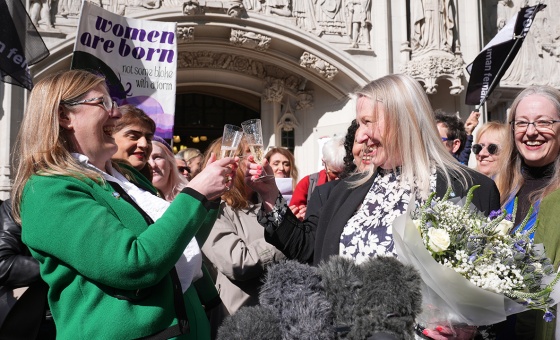This is the last article you can read this month
You can read more article this month
You can read more articles this month
Sorry your limit is up for this month
Reset on:
Please help support the Morning Star by subscribing here
IN 1981, Edward Bonner — then reporter for the New York Times — and photojournalist Susan Meiselas were smuggled into Morazan by guerilla forces at the height of the El Salvadorian civil war.
The war was being fought between the Reagan-backed Salvadorian government (then a tenuous pact between oligarchs and the military) and the left-wing, umbrella coalition, Farabundo Marti National Liberation Front (FMLN).
After a long and treacherous journey, Bonner and Meiselas came upon the humble mountain town of El Mozote, or rather, the rubble, ash and corpses that remained.
Bonner recalls in an article for The Atlantic: “Skeletons were being picked over by vultures, the stench of death carried by the breeze.”
What Bonner and Meiselas had uncovered was, and remains to this day, the site of one of the most egregious and brutal massacres ever to darken the history of Central America — and the subsequent cover-up, led by US diplomat and politician, Elliott Abrams, is as relevant as ever.
Many of those affected by the El Mozote massacre (as well as countless other war crimes committed by the US-trained and armed junta forces from 1979-92) still survive.
Going by the testimony of some of the few survivors and reporting thereafter, here’s what happened at El Mozote, exactly 38 years ago today.
With the population of the region well aware of atrocities committed by the Salvadorian army, and having been warned of their approach, hundreds of people flooded into El Mazote, seeing it as a sanctuary for its self-proclaimed neutral status and religious character.
The patriarch of the town, Marcos Diaz, even delivered a speech to the township, telling them that he’d received assurances from the government that the population would be left unharmed as the army passed through.
The following day, the army arrived — specifically, the Atlacatl Battalion, a division created by the US Army’s School of the Americas.
Their mission, Operacion Rescate (Operation Rescue), was to neutralise a FMLN training camp that had been reported in the area — or so they said.
What the Atlacatl found in the 20-house community of El Mozote were mostly campesinos — local farming families who’d sought refuge from the surrounding rural areas.
Immediately, the Atlacatl ordered all 900 inhabitants into their houses for the night, warning anyone who left would be shot.
The next morning, Atlacatl forces separated the men their families. The battalion began by torturing the men, using acid, drills and electrodes before setting their US-purchased M16 rifles to automatic fire.
The women, having endured the slow, brutal murder of their loved ones, were then systematically raped before being executed.
The children weren’t spared either — the average age of a child killed at El Mazote was just six years old, with one report of an army major flinging a toddler into the air and spearing him with a bayonet as he came back down.
The attitude of the Atlacatl forces during the massacre goes to show just how deep anti-communist ideological hatred and the dehumanisation that lies therein, can run.
One survivor who now campaigns for justice, Amadeo Sanchez, who was only eight years old at the time, saw, upon returning to the ruins of the village, a mother, Mario Santos, shot dead in her bed next to her day-old daughter who had been stabbed in the throat.
On the wall next to them, written in the infant’s blood were the words, “un nino muerto, un guerrillero menos” (one dead child is one less guerilla).
After the massacre, the army burnt the village to the ground before mounting their military helicopters and moving on. The final death toll is difficult to pin down, but the minimum is widely held to be upwards of 800.
Having armed and trained the Atlacatl Battalion, and heavily backed the Salvadorian government out of Reagan-era phobia of Latin American communism, the US intelligence community had something of a problem on their hands when coverage of the massacre, such as Bonner’s, began to surface.
Enter Elliott Abrams.
Having been appointed in 1980 to — ironically — the position of assistant secretary of state for human rights and humanitarian affairs in 1980, Abrams immediately set about discrediting any reports of the massacre.
When Bonner’s initial report was published in the New York Times, the Reagan administration, led in the most part by Abrams, dismissed the reporting as guerilla propaganda.
On February 8, Abrams, after being questioned on El Mazote, told the Senate committee: “It appears to be an incident that is at least being significantly misused, at the very best, by the guerillas.”
The murder and rape of hundreds of men, women and children just an “incident,” according to Abrams.
Bonner and other reporters attempting to shed light on the massacre were also attacked by major players in the mainstream media.
Bonner left the New York Times soon after, likely due to its failure to defend his integrity: the Wall Street Journal described the reporting as “overly credulous” and “out on a limb.”
Worse still William A Henry III wrote: “An even more crucial if common oversight is the fact that women and children, generally presumed to be civilians, can be active participants in guerilla war” — a statement that may seem more fitting scrawled in an infant’s blood on the scorched wall of a looted hut than on the pages of Time magazine.
Today is the anniversary of the El Mazote massacre, and remembrance of such events should, in an ideal world, be confined to solemn historical memorial.
However, with the Trump administration still drooling down onto the free world, it’s my sad duty to inform you that not only has Abrams not been reprimanded for his part in covering up El Mazote, but has instead been specially appointed, last year by Secretary of State Mike Pompeo as “special representative to Venezuela.”
With Abrams’ track record of deceit, callousness and an any-means-necessary approach to combatting the left, could there be a worse candidate to oversee the current, complicated and volatile politics of Venezuela?
For the CIA agenda — unchanged since Reagan’s day — fighting Latin America’s mild social democracy now as if it were Soviet communism, Abrams is just the man for the job.
We must be poised to hold covert US involvement to account — because with Abrams at the helm, who knows what “incidents” might be papered over.
Miles Ellingham is a London-based writer and poet.











